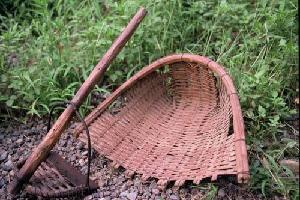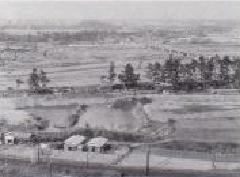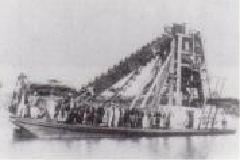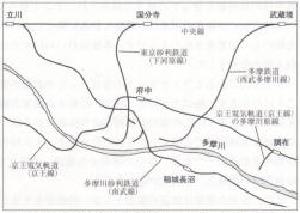
Tama River gravel mining
Gravel mining in the Tama River basin has been carried out since the Edo period, and the gravel was sold to the shogunate. Transport money However, it wasn't until the middle of the Meiji period that the practice really took off, when river gravel was raked up using a shovel. Gravel winnowing The gold was then sorted with a gold sieve and transported to Tokyo. Drilling Before the introduction of sorting machines, all gravel was collected by hand, and the term "Tamagawa Gravel Sifter" was coined. Gravel collected in the downstream area was sifted by hand in a wooden sieve. Gravel ship Using Rokugo The river gravel was transported to Tokyo, where it was transshipped and shipped to the Tokyo metropolitan area. During the Meiji period, river gravel was mostly used for ballast for roads and railways, and large-grain gravel was in demand. In villages along the Tama River, gravel sifters provided a convenient source of cash income for farmers.
Gravel mining after the Taisho period
In the Taisho era, concrete aggregate The use of the Tama River as a bridge became more common, and the gravel from the Tama River was also used. Especially after the Great Kanto Earthquake in 1923, Reconstruction Demand As a result, the production of river gravel increased sharply. At that time, the center of gravel mining in the Tama River was the midstream area from Tachikawa to Inagi. This was because the lower reaches had already been exploited. From around the end of the Taisho period, large excavators and mechanical ships came into use, and the work of extracting gravel, sorting it, and washing it became much easier. Consistency This made it possible to do this, and the gravel industry became more mechanized and rationalized.
Gravel Railway of Installation
Gravel extraction is done by the railway Installation The following is a list of railways that were built in the area around Inagi for the purpose of collecting and transporting gravel:
The Tamagawa Gravel Railway (later the Nambu Line), which was established in 1920 and opened between Kawasaki and Daimaru in 1927, and the Keio Line, which began operating between Chofu and Tamagawahara in 1916. Electric railway (later the Keio Line) Tamagawara Line In 1922, the Chuo Line opened between Musashi-Sakai and Koremasa on the Tama Railway (later the Seibu Tamagawa Line), and in 1910, the Tokyo Gravel Railway (JNR) began operating between Kokubunji and Shimokawara. Shimokawahara Line In terms of when they were built, they were all constructed in just under 20 years, from the end of the Meiji period to the beginning of the Showa period, meaning that they were already completed by 1929. In terms of where the railways were built, the Nambu Line, Keio Line, and Chuo Line were the main lines, and from there Fish hook shape To Branching do Branch line You can see it stretching out towards the Tama River.
Effects of gravel mining
With the mechanization of gravel mining and the construction of railways that made it possible to transport large amounts of gravel, gravel extraction from the Tama River reached its peak from the end of the Taisho period to the beginning of the Showa period. However, the mining of large amounts of gravel had various negative effects on the Tama River itself. Seawall The destruction of Riverbed Agricultural water use due to the decline Water intake difficulties , Water quality Pollution The negative impact on the fishing industry due to the tsunami has been one of the major problems. Futago Bridge Further upstream, Hino Bridge In the further downstream areas High water level Mining in the area is not permitted, and only Low water level That's all that's left.
After the war, in the 1940s, postwar reconstruction gradually progressed, and gravel mining in the Tama River resumed prewar conditions. Prosperity However, Rough digging As gravel pollution caused by the erosion of the river progressed, the "Agreement on the Control of Gravel Collection in the Tama River" was concluded in 1952 for the Tama River downstream from Hinobashi Bridge, and regulations were strengthened. In the 1950s, regulations were further strengthened, and in 1964, the city of Ome Mannenbashi Bridge Commercial mining up to that point was completely banned. In the following year, 1965, it was completely banned throughout the entire Tama River area, bringing an end to the history of gravel mining.
References: "Inagi City History, Volume 2"
"Folklore of Inagi City (4)" "Inagi Things and Life 3"

Gravel winnow and jolen used for gravel mining

A gravel mining hole in Daimaru (photographed by Hideo Hamada in 1964)

A machine ship for gravel mining (around the end of the Taisho era)

Deterioration of the riverbed due to over-digging (1988)

Gravel railway around Inagi in the early Showa period












